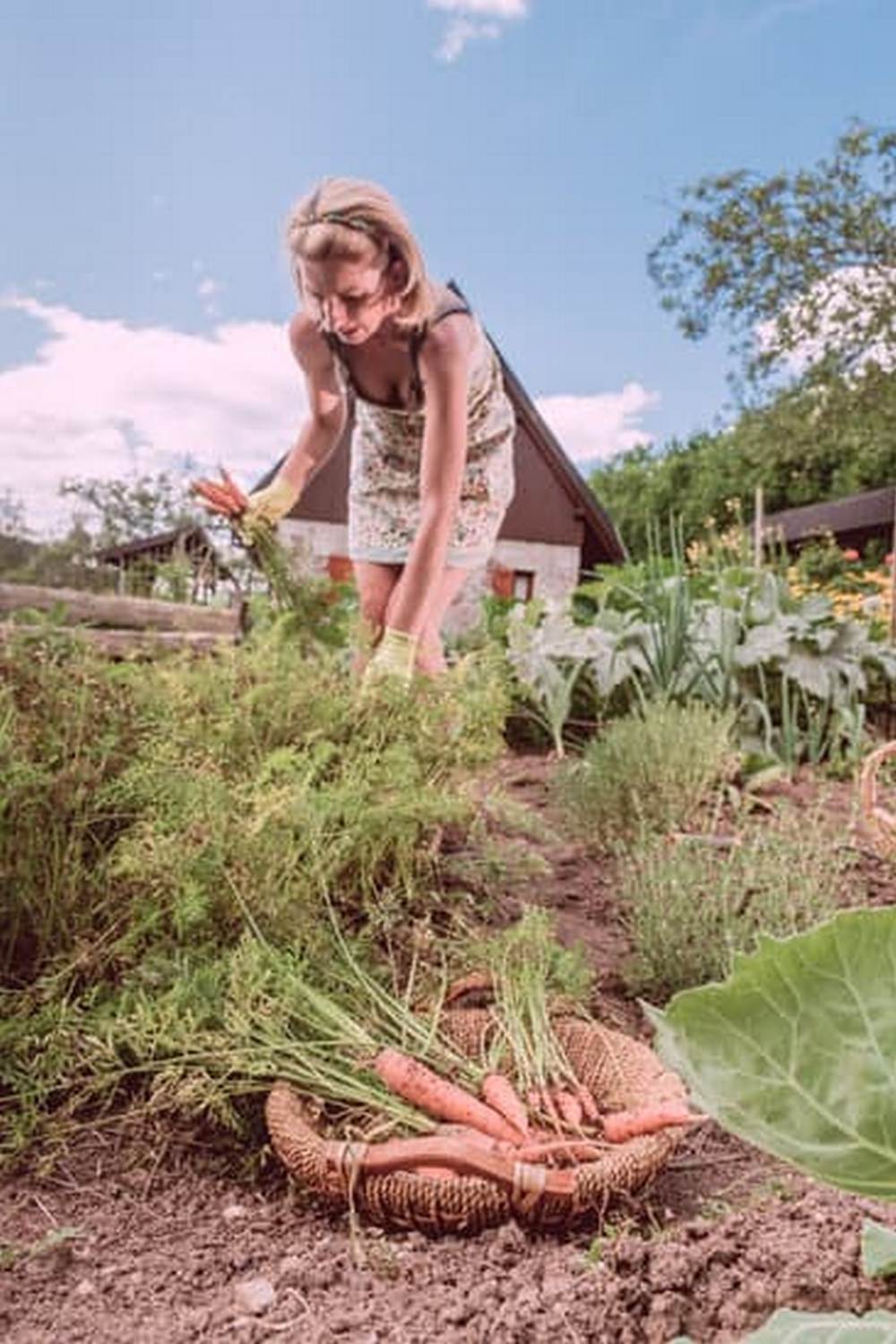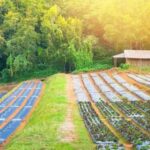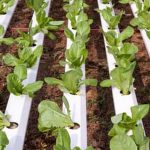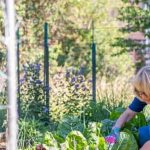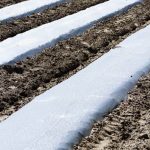Vegetable plants for gardens are an essential component of any thriving garden, providing fresh, nutritious produce for you and your family. Whether you are a beginner or seasoned gardener, the right vegetable plants can add not only aesthetic value to your garden but also contribute to a sustainable and healthy lifestyle. In this section, we will explore the importance of vegetable plants in a garden and how they can enhance the overall gardening experience.
Vegetable plants play a crucial role in a garden by providing a sustainable source of fresh and healthy produce. Additionally, they add diversity to your garden landscape, creating visual interest and enhancing the overall beauty of your outdoor space. The act of growing your own vegetables can also be incredibly rewarding, allowing you to connect with nature and develop valuable gardening skills.
Furthermore, incorporating vegetable plants into your garden promotes self-sufficiency and reduces reliance on store-bought produce. By growing your own vegetables, you have greater control over the cultivation process, including choosing organic methods and avoiding harmful chemicals. In addition to the numerous health benefits of consuming freshly harvested vegetables, gardening with vegetable plants allows for cost savings in the long run as well.
Planning Your Vegetable Garden
When planning your vegetable garden, one of the most important decisions to make is choosing the right plants to grow. Whether you are a seasoned gardener or a beginner, selecting the best vegetable plants for your garden can significantly impact the success of your harvest. Here are some tips for choosing the right plants for your vegetable garden:
- Consider your climate and growing conditions: Before selecting vegetable plants for your garden, take into account the climate and growing conditions in your area. Certain vegetables thrive in specific environments, so it’s essential to choose plants that are well-suited to your local climate.
- Assess your space: Evaluate the available space in your garden to determine how many and what types of vegetable plants you can accommodate. Some vegetables, such as tomatoes and peppers, require more room to spread out, while others, like lettuce and radishes, can be grown in smaller spaces or containers.
- Think about what you enjoy eating: When choosing vegetable plants for your garden, consider what you and your family enjoy eating. Growing vegetables that you love will not only provide you with fresh produce but also make gardening a more enjoyable experience.
By carefully planning and selecting the right vegetable plants for your garden, you can set yourself up for a bountiful and successful harvest.
Ultimately, choosing the right vegetable plants for your garden is a crucial step in ensuring a successful and rewarding gardening experience. Take the time to consider your climate and growing conditions, assess available space, and think about what vegetables you enjoy eating before making your selections. With proper planning and thoughtful consideration, you can create a thriving vegetable garden that yields an abundance of freshly grown produce.
Best Vegetable Plants for Beginners
Choosing the right vegetable plants for your garden is crucial, especially for beginners. Before you start planting, consider factors such as soil quality, sunlight exposure, and climate in your area. It’s also important to select vegetables that are easy to grow and maintain, ensuring a successful and enjoyable gardening experience.
Here are some of the best vegetable plants for beginners:
- Tomatoes: Easy to grow and versatile, tomatoes can be grown in containers or directly into the ground. They require regular watering and plenty of sunlight.
- Peppers: Whether it’s bell peppers, hot peppers, or sweet peppers, these plants are relatively low-maintenance and produce bountiful harvests with proper care.
- Zucchini: These fast-growing plants are perfect for beginners. They thrive in warm weather and produce an abundance of tasty zucchinis throughout the season.
In addition to these vegetables, other great options include lettuce, cucumbers, and green beans. When starting your first garden, it’s essential to choose vegetables that are low-maintenance and have a high likelihood of success.
With the right selection of vegetable plants for gardens, beginners can enjoy a bountiful harvest while gaining valuable gardening experience. By starting with these easy-to-grow options, you can build confidence and eventually explore more challenging crops in the future. Happy gardening.
Seasonal Vegetable Plants
When it comes to growing a successful vegetable garden, one of the key factors to consider is planting the right vegetables at the right time. Understanding which vegetables thrive in certain seasons can greatly increase your chances of a bountiful harvest. Whether you’re a seasoned gardener or just starting out, knowing what to plant when is essential for a successful garden.
Spring
In the spring, it’s important to focus on cool-season vegetables that can withstand the lingering chill of winter and early spring frosts. Some popular choices for spring planting include peas, lettuce, spinach, radishes, and carrots. These vegetables are not only cold-hardy but also thrive in the milder temperatures of spring.
Summer
As the weather warms up, it’s time to shift your focus to warm-season vegetables that require plenty of sunlight and warmth to thrive. Tomatoes, peppers, cucumbers, zucchini, and beans are excellent choices for summer planting. These vegetables love the heat and will produce an abundance of delicious fruits throughout the summer months.
Fall
In preparation for fall planting, consider cool-season vegetables once again. Fall is an ideal time to plant crops such as broccoli, cauliflower, Brussels sprouts, and kale. These hearty vegetables will continue to grow as temperatures cool down and provide you with a fresh supply of produce well into the autumn months.
By understanding which vegetables to plant during each season, you can maximize your garden’s productivity and ensure a steady supply of fresh produce throughout the year.
Companion Planting
One of the key benefits of companion planting with vegetable plants is pest control. For example, planting basil alongside tomatoes can help repel harmful insects that often attack tomato plants.
Similarly, marigolds are known to deter nematodes in the soil, making them an excellent companion plant for many different types of vegetables. By incorporating these natural pest-repelling properties into your garden design, you can reduce the need for chemical pesticides and create a healthier growing environment for your vegetable plants.
In addition to pest control, companion planting also helps promote better growth and flavor in certain vegetables. For example, planting leafy greens like lettuce alongside tall, sun-loving plants such as corn or beans can provide shade and protection from extreme heat, ultimately extending their growing season.
The natural symbiosis between compatible plant species can also improve soil health by promoting beneficial microbial activity and nutrient exchange. All of these factors contribute to a more bountiful harvest from your vegetable garden.
| Vegetable | Companion Plant |
|---|---|
| Tomatoes | Basil |
| Lettuce | Corn or Beans |
| Carrots | Onions or Leeks |
Caring for Vegetable Plants
Watering your vegetable plants is essential for their growth and development. Most vegetable plants require at least 1 inch of water per week, either from rainfall or irrigation. It’s important to water deeply and less frequently to encourage deep root growth, rather than shallow, frequent watering which can lead to weaker root systems. Using a soaker hose or drip irrigation system can help deliver water directly to the plant’s roots while minimizing evaporation.
Fertilizing your vegetable plants is also important as it provides essential nutrients for healthy growth. Before planting, it’s important to prepare the soil by adding compost or organic matter to improve its nutrient content.
Once the plants are established, a balanced fertilizer can be applied according to the specific needs of each type of vegetable plant. It’s important to follow the recommended guidelines for fertilization as over-fertilizing can lead to excessive foliage growth at the expense of fruit production.
Lastly, regular maintenance is key in caring for vegetable plants in your garden. This includes monitoring for weeds and removing them promptly as they compete with your vegetable plants for nutrients and water. Additionally, checking for pests and diseases regularly will allow you to take action before they cause significant damage to your crops.
| Vegetable Plant Care | Tips |
|---|---|
| Watering | Water deeply and less frequently; use a soaker hose or drip irrigation system |
| Fertilizing | Prepare soil with compost before planting; use balanced fertilizer according to specific needs |
| Maintenance | Regularly check for weeds, pests, and diseases in order to maintain plant health |
Common Pests and Diseases Affecting Vegetable Plants and How to Control Them
Pests and diseases can pose a significant threat to the health and productivity of your vegetable plants. It’s essential to be proactive in preventing, identifying, and treating these issues to ensure a successful harvest from your garden. Here are some common pests and diseases affecting vegetable plants and how you can control them.
Common Pests
Aphids, cutworms, caterpillars, and beetles are just a few of the many pests that can wreak havoc on your vegetable garden. These pests feed on the leaves, stems, and fruits of your plants, leading to stunted growth and reduced yields. To control these pests, you can introduce natural predators such as ladybugs or lacewings to your garden. Alternatively, using organic insecticidal soaps or neem oil can help control pest populations without harming beneficial insects like bees.
Common Diseases
Fungal diseases like powdery mildew, blight, and damping-off can also affect vegetable plants. These diseases thrive in warm, moist conditions and can quickly spread throughout your garden if not properly managed. To prevent fungal diseases, it’s crucial to practice good sanitation by removing any infected plant material and ensuring proper air circulation around your plants. Additionally, applying copper-based fungicides or sulfur sprays can help control the spread of fungal diseases in your garden.
Integrated Pest Management
Implementing an integrated pest management (IPM) strategy is key to controlling both pests and diseases in your vegetable garden. This approach emphasizes preventive measures such as selecting disease-resistant plant varieties, rotating crops annually, and maintaining healthy soil through regular composting and mulching. By combining cultural practices with biological controls and targeted pesticide applications as a last resort, you can effectively manage pest and disease pressures while minimizing environmental impact.
By staying vigilant and taking proactive measures to address pest and disease issues in your vegetable garden, you can ensure a bountiful harvest of fresh home-grown produce for you and your family to enjoy.
Harvesting and Using the Fruits of Your Labor
In conclusion, vegetable plants are a vital and rewarding addition to any garden. From the satisfaction of growing your own food to the health and environmental benefits, there are countless reasons to incorporate vegetable plants into your outdoor space. Whether you are a beginner or an experienced gardener, there are plenty of options for vegetable plants that can thrive in your garden.
As mentioned in this article, planning is crucial when it comes to choosing the right plants for your vegetable garden. Consider factors such as your climate, available space, and personal preferences when selecting which vegetables to grow. Additionally, understanding seasonal planting and companion planting can help maximize the productivity and health of your vegetable plants.
After caring for your vegetable plants by watering, fertilizing, and maintaining them properly, it’s important to be aware of common pests and diseases that may affect them. Learning how to identify and control these issues is essential for ensuring a successful harvest. With the right knowledge and care, you can enjoy a bountiful harvest from your garden.
Lastly, once you have harvested your freshly grown vegetables from your garden, there are numerous ways to enjoy the fruits of your labor. From cooking with them in delicious recipes to preserving them for future use, homegrown vegetables offer unparalleled flavor and nutrition. By incorporating these tips and techniques into your gardening routine, you can make the most of your vegetable plants for gardens.
Frequently Asked Questions
What Is the Best Vegetable to Grow in Your Garden?
The best vegetable to grow in your garden ultimately depends on your location, climate, and personal preferences. However, some popular and relatively easy options include tomatoes, peppers, zucchini, and spinach.
What Grows Well Together in a Vegetable Garden?
Certain vegetables grow well together in a companion planting system. For example, planting carrots with onions can help deter carrot flies, while growing basil near tomatoes can improve the latter’s flavor. It’s also beneficial to rotate crops each season to prevent soil depletion.
What Is the Best Layout for a Vegetable Garden?
The best layout for a vegetable garden is one that takes into account factors such as sunlight exposure, water drainage, and spacing between plants. Many gardeners opt for raised beds or square foot gardening layouts to maximize space and make it easier to maintain the garden. Ultimately, the layout should be functional and suit your specific needs and preferences.

If you’re looking to get into vegetable gardening, or are just looking for some tips on how to make your current garden better, then you’ve come to the right place! My name is Ethel and I have been gardening for years. In this blog, I’m going to share with you some of my best tips on how to create a successful vegetable garden.

